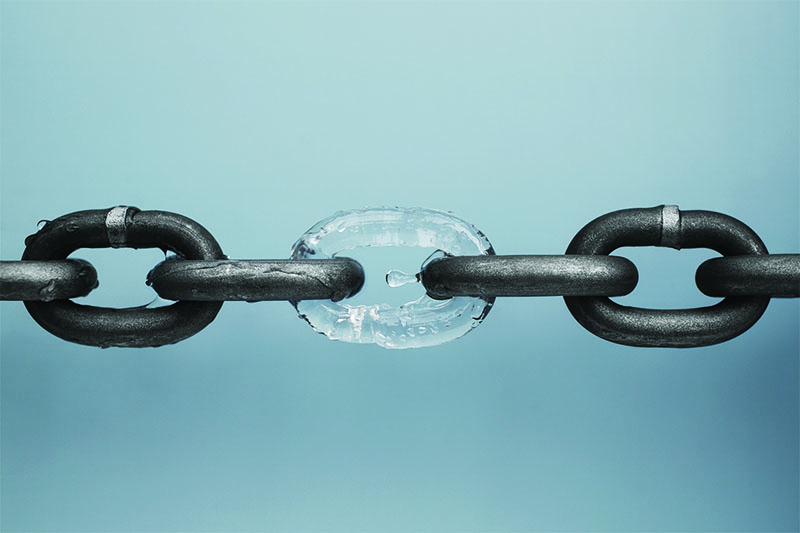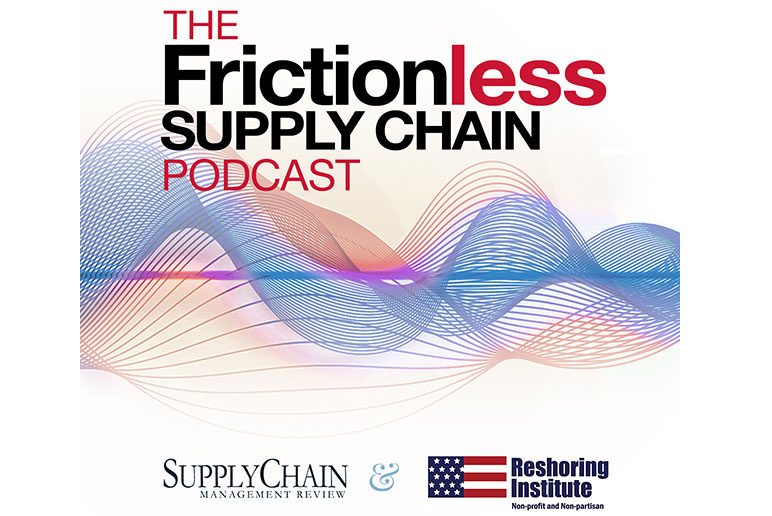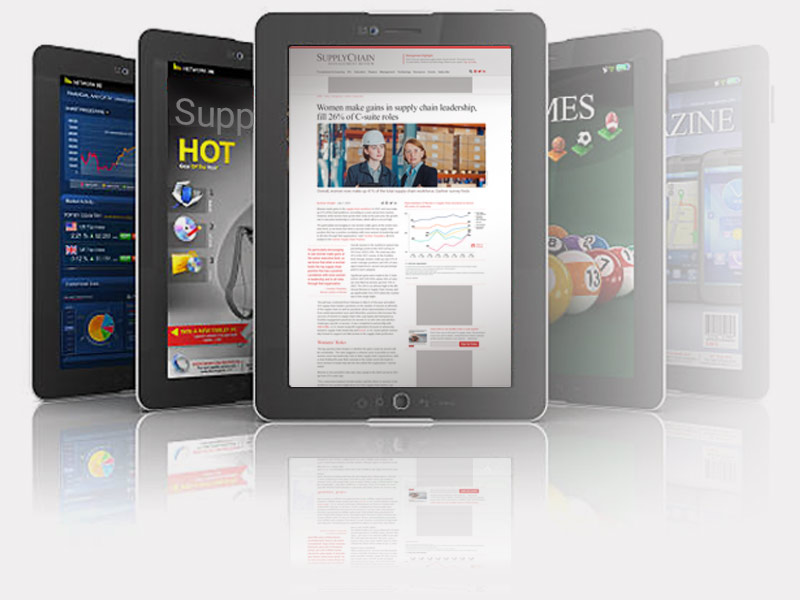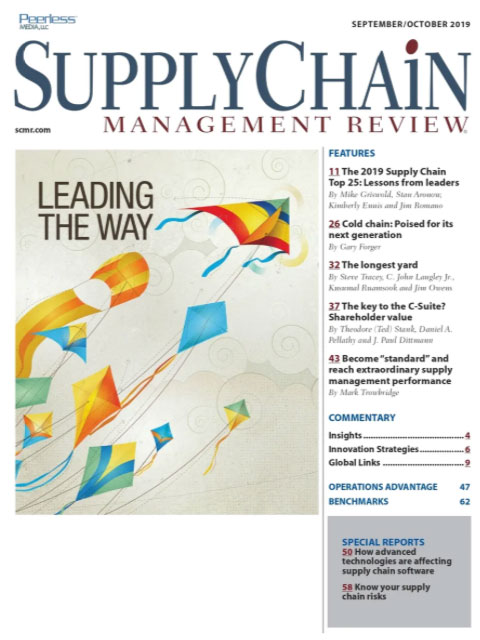Sorry, but your login has failed. Please recheck your login information and resubmit. If your subscription has expired, renew here.
September-October 2019
It’s that time of year again, when we feature the Top 25 supply chains from Gartner. What I enjoy most about this research is the window it provides into where supply chains are going next: After all, while some lead, the rest of us follow. Browse this issue archive.Need Help? Contact customer service 847-559-7581 More options
Cold chain has a lot going for it, and, well, maybe not in a good way. Think about it: It’s an inhospitable environment with freezer temperatures as cold as -20°F—or worse. Workers would rather be at the beach, and who can blame them. There is rising regulatory scrutiny on both the food/beverage and pharmaceuticals side of cold chain. Customers are more demanding than ever. SKUs are exploding. Costs of everything from labor to regulation to energy are on the rise. And, it’s all taking place within the context of a rapidly shifting e-commerce landscape.
If that all sounds daunting, remember the old adage that what doesn’t kill you makes you stronger?
The fact is, cold chain is unique among all supply chains. That’s okay because it isn’t all that much different from the rest of the supply chain in so many ways.
The product in/product out model thrives in cold chains as it does everywhere else, maybe even more so because expiration dates put a premium on inventory management. So do the concepts of order accuracy, timely delivery and supply chain efficiencies, to name three. And customers have just as high expectations for their blueberry ice cream and their morning meds as they do for any other item that moves through the supply chain (namely, everything).
What does make cold chain so interesting right now is that it is managing three significant shifts without raising its temperature. That isn’t easy to pull off.
The push to automate facilities whenever possible continues. It’s a major weapon against the high cost of keeping refrigerated and freezer warehouses cold, cost efficient and highly responsive at the same time.
There’s also the matter of improved product flow for both food/beverage and pharma cold chains. The former, used to working in a world of pallets, is moving to layers on pallets, not to mention eaches in the e-commerce cold chain. Pharma is making a similar transition from small batches to even smaller batches all the way to eaches. Product proliferation and the consumer are driving these shifts.

This complete article is available to subscribers only.
Log in now for full access or start your PLUS+ subscription for instant access.
SC
MR
Sorry, but your login has failed. Please recheck your login information and resubmit. If your subscription has expired, renew here.
September-October 2019
It’s that time of year again, when we feature the Top 25 supply chains from Gartner. What I enjoy most about this research is the window it provides into where supply chains are going next: After all, while some… Browse this issue archive. Access your online digital edition. Download a PDF file of the September-October 2019 issue.Cold chain has a lot going for it, and, well, maybe not in a good way. Think about it: It's an inhospitable environment with freezer temperatures as cold as -20°F—or worse. Workers would rather be at the beach, and who can blame them. There is rising regulatory scrutiny on both the food/beverage and pharmaceuticals side of cold chain. Customers are more demanding than ever. SKUs are exploding. Costs of everything from labor to regulation to energy are on the rise. And, it's all taking place within the context of a rapidly shifting e-commerce landscape.
If that all sounds daunting, remember the old adage that what doesn't kill you makes you stronger?
The fact is, cold chain is unique among all supply chains. That's okay because it isn't all that much different from the rest of the supply chain in so many ways.
The product in/product out model thrives in cold chains as it does everywhere else, maybe even more so because expiration dates put a premium on inventory management. So do the concepts of order accuracy, timely delivery and supply chain efficiencies, to name three. And customers have just as high expectations for their blueberry ice cream and their morning meds as they do for any other item that moves through the supply chain (namely, everything).
What does make cold chain so interesting right now is that it is managing three significant shifts without raising its temperature. That isn't easy to pull off.
The push to automate facilities whenever possible continues. It's a major weapon against the high cost of keeping refrigerated and freezer warehouses cold, cost efficient and highly responsive at the same time.
There's also the matter of improved product flow for both food/beverage and pharma cold chains. The former, used to working in a world of pallets, is moving to layers on pallets, not to mention eaches in the e-commerce cold chain. Pharma is making a similar transition from small batches to even smaller batches all the way to eaches. Product proliferation and the consumer are driving these shifts.
SC
MR


Latest Supply Chain News
Latest Resources

 Explore
Explore
Procurement & Sourcing News
- Geopolitical readiness in supply chains: Strategic challenges for leaders
- With capacity to spare, logistics real estate demand remains subdued
- Tariffs, taxes and trade: The impact of Trump’s reelection on the supply chain
- How to improve demand forecasts for new product families
- Aggregators sitting on the throne of Africa’s e-commerce supply chains: What lessons can we learn?
- Cross-border transport 2024: Navigating the surge
- More Procurement & Sourcing
Latest Procurement & Sourcing Resources

Subscribe

Supply Chain Management Review delivers the best industry content.

Editors’ Picks





